Idiomas afuera de la escuela, Diciembre 2017
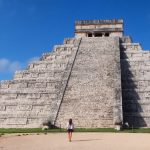
Siempre quería aprovechar de mi tiempo libre en México mientras vivía allí, para viajar por el país y ver su cultura variada de sus regiones distintas. Creo que se aprende un lenguaje por las experiencias y la gente que se conoce, en vez de en una biblioteca o en la sala de clase. Por eso, en un país tan grande y culturalmente diverso que México, fue importante para mí a vivir la vida a fuera de la ciudad capital. Ruinas mayas, cascadas remotas, pueblos mágicos, playas salvajes, cenotes místicos y ciudades abundantes con festividades espirituales: México no solo tiene una, pero identidades varias, y quería sumergirme en todas.
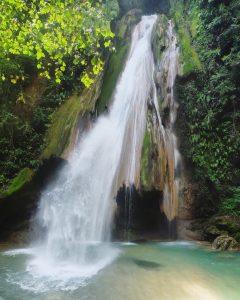
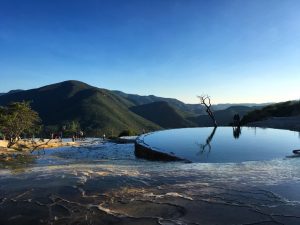
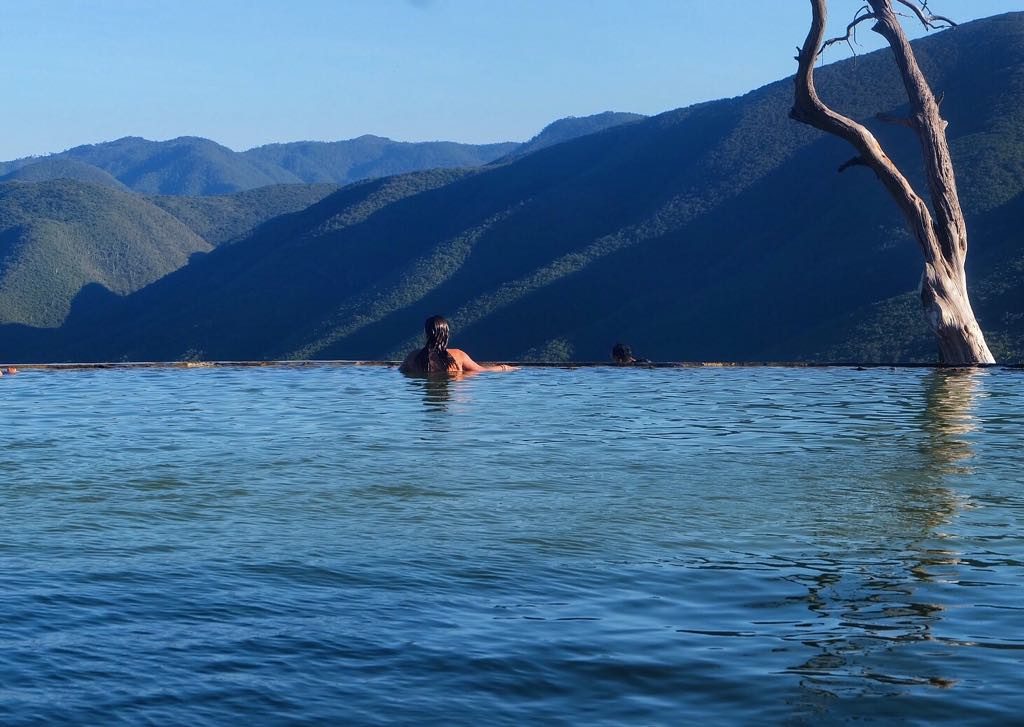
La Península Yucatán (‘La Riviera Maya’)
Al inicio de mi semestre en México, la facultad fue cerrado para 2 semanas debido a obras de construcción. Por eso, después de buscar una casa donde vivir y establecerme en la ciudad, aproveché de este tiempo para viajar al Península Yucatán. El Yucatán estaba el centro de la civilización maya, y hoy día hay muchos sitios arqueológicos allí, por ejemplo, Chichén Itzá y Tulum. Tenía una clase de historia de arte prehispánico así que fue muy interesante visitar los dos sitios antes de empezaron mis clases. Fui primero a Mérida, una ciudad colonial y desde allí fui a Chichén Itzá, una de las ciudades más grandes del mundo Maya, con una de las poblaciones más diversas. El pueblo más cerca es Valladolid, donde fui para visitar un cenote (una dolina inundada), algunos profundos con cavernas, otros con poca profundidad que parecen una poza o un lago bonito. También, visité un cenote en Tulum, tipo poco profundo, que parece una pintura de acuarela – los colores tan vividos. Las ruinas mayas de Tulum se ubican al bordo de un acantilado al lado del mar caribe, una ubicación increíble donde realmente se puede imaginar los jefes mayas viendo los barcos españoles primeros cruzando el horizonte hacia sus comunidades. Fue una de las ultimas ciudades donde vivía la gente maya, y sobrevivió 70 años de la conquista española. Además, hoy día, está un sitio maya mejor conservado en México. Los últimos lugares que visité en el Yucatán fueron la Isla Cozumel y Laguna Bacalar. Se dice que Cozumel esta uno de los lugares mejores para hacer buceo submarino en el mundo. Laguna Bacalar esta conocido como la laguna de siete colores, debido a los 7 azules de sus aguas. La Riviera Maya fue un lugar hermoso a visitar estas primeras semanas en México, y me enseñó mucho sobre la historia maya, información que podía usar en mis clases.
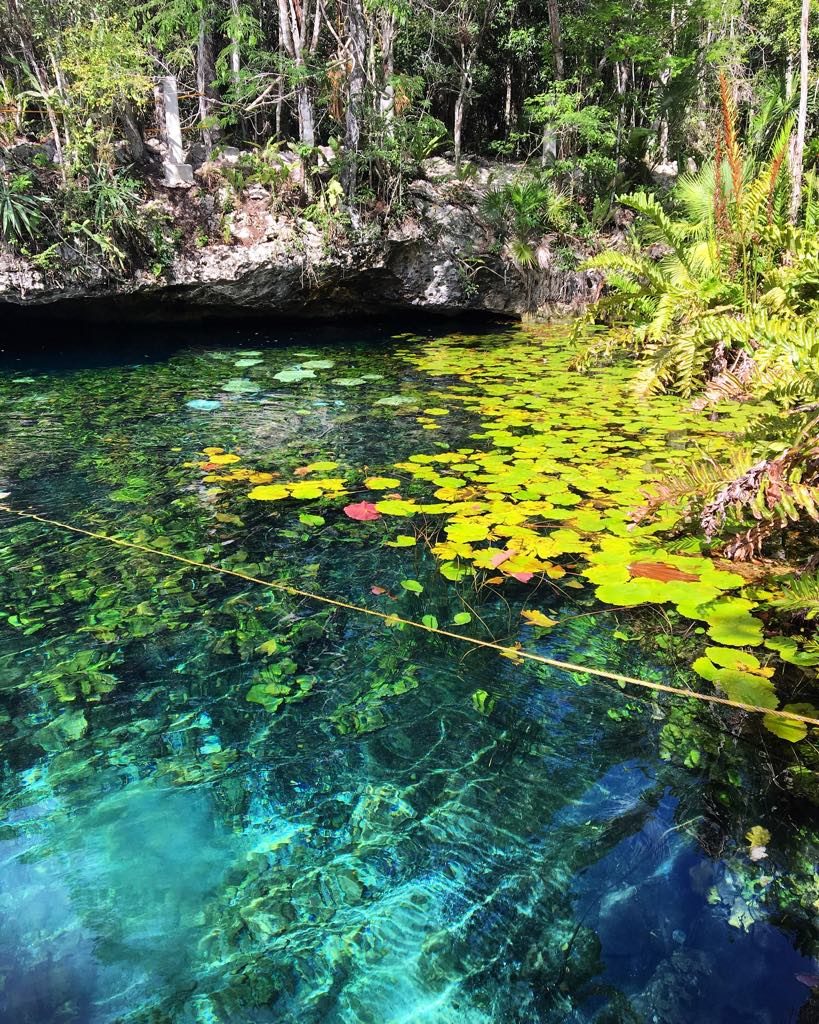
Querétaro y la Reserva de la Biósfera Sierra Gorda
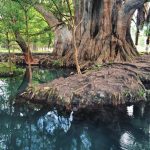 En medio del semestre, tuve algunos días inhábiles que me permiten viajar a la ciudad de Querétaro y la Reserva de la Sierra Gorda. Esta ciudad pequeña fue un buen cambio al capital ruidoso, y la gente estaban muy amable y agradable. Me encontré hablando fácilmente con desconocidos para preguntar sobre la ciudad, o para escuchar sobre sus vidas allí. Conductores de taxis, mujeres en el bus, gente en cafeterías, la gente en el mercado… ¡y la lista sigue! Después de un día paseando por las calles coloradas de Querétaro, fuimos a Jalpan de Serra, el pueblo principal en el centro de la Sierra Gorda. No hay muchas turistas que visitan este lugar, aunque hay buses desde Querétaro, cuando estas allí no hay mucho transporte público, pero Jalpan tiene la mayoría de buses. Buscamos un alojamiento con una familia muy acogedora, en su hogar hermosa, quienes nos ayudó con recomendaciones de donde ir y que hacer. Incluso comieron desayuno con nosotros. Jalpan es un ‘pueblo mágico’, que es una iniciativa de turismo del gobierno de México para promover algunos pueblos que ofrecen una experiencia ‘mágica’ a través su belleza natural, valores culturales, o significancia histórica. Dentro de una hora de Jalpan, descubrimos cascadas remotas, ríos, cavernas, lagunas y montañas, y también un árbol que viene de aguas manantiales. La lejanía de esta área nos permití a ver un lado de México poco tocado por turismo, en su belleza natural y en la amabilidad de su gente.
En medio del semestre, tuve algunos días inhábiles que me permiten viajar a la ciudad de Querétaro y la Reserva de la Sierra Gorda. Esta ciudad pequeña fue un buen cambio al capital ruidoso, y la gente estaban muy amable y agradable. Me encontré hablando fácilmente con desconocidos para preguntar sobre la ciudad, o para escuchar sobre sus vidas allí. Conductores de taxis, mujeres en el bus, gente en cafeterías, la gente en el mercado… ¡y la lista sigue! Después de un día paseando por las calles coloradas de Querétaro, fuimos a Jalpan de Serra, el pueblo principal en el centro de la Sierra Gorda. No hay muchas turistas que visitan este lugar, aunque hay buses desde Querétaro, cuando estas allí no hay mucho transporte público, pero Jalpan tiene la mayoría de buses. Buscamos un alojamiento con una familia muy acogedora, en su hogar hermosa, quienes nos ayudó con recomendaciones de donde ir y que hacer. Incluso comieron desayuno con nosotros. Jalpan es un ‘pueblo mágico’, que es una iniciativa de turismo del gobierno de México para promover algunos pueblos que ofrecen una experiencia ‘mágica’ a través su belleza natural, valores culturales, o significancia histórica. Dentro de una hora de Jalpan, descubrimos cascadas remotas, ríos, cavernas, lagunas y montañas, y también un árbol que viene de aguas manantiales. La lejanía de esta área nos permití a ver un lado de México poco tocado por turismo, en su belleza natural y en la amabilidad de su gente.
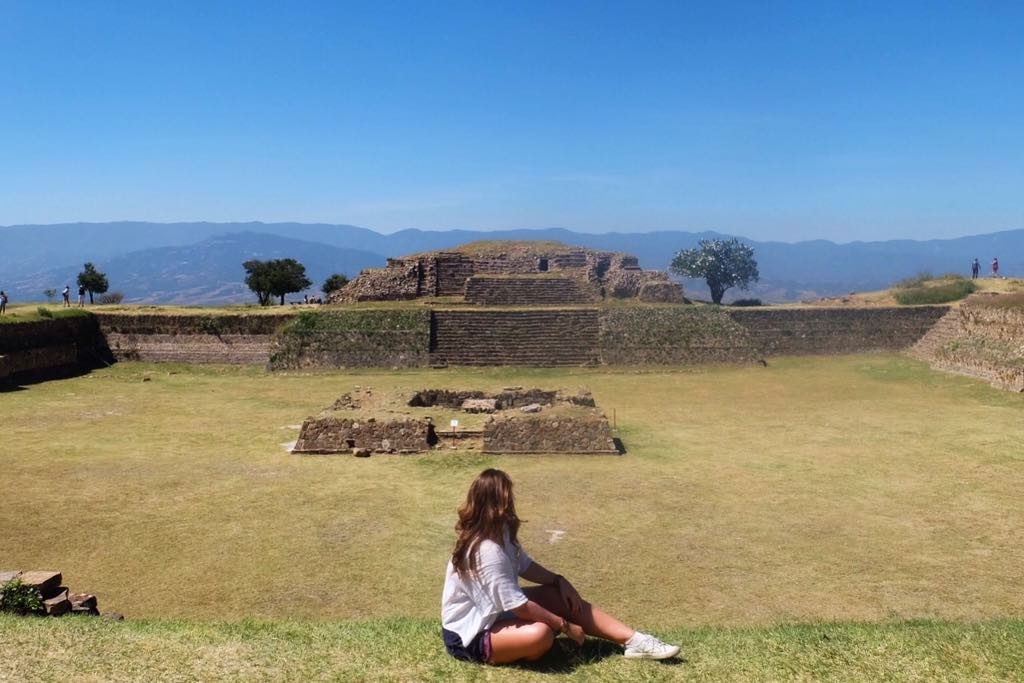
Oaxaca y la costa pacifica
Mi viaje final que podía hacer en México fue durante Día de Muertos (de que hablo más en detalle en mi blog anterior). Teníamos 2 días inhábiles, y no tuve clases en los otros días en esta semana, entonces podía pasar una semana en Oaxaca para celebrar Día de Muertos y vivir la experiencia. 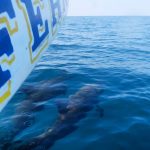 Salimos la Ciudad de México martes por la mañana (teníamos que esperar 4 horas para un bus porque no reservamos boletas en avanza), y llegamos en la Ciudad Oaxaca por la tarde, justo en tiempo para empezar las festividades. La ciudad estaba llena de gente y los espíritus de sus queridos, en el centro de la ciudad y también en los panteones hermosas. Desde la ciudad, fuimos a Monte Alban, un sitio arqueológico que fue uno de las primeras ciudades zapotecas en Mesoamérica, y Hierve el Agua, cascadas petrificadas y piscinas infinitas naturales. Con los últimos días, fuimos al pueblo de Mazunte en la costa pacífica para probar la comida marisca (ceviche), y ver los delfines salvajes, y la temporada de apareamiento de las tortugas de mar.
Salimos la Ciudad de México martes por la mañana (teníamos que esperar 4 horas para un bus porque no reservamos boletas en avanza), y llegamos en la Ciudad Oaxaca por la tarde, justo en tiempo para empezar las festividades. La ciudad estaba llena de gente y los espíritus de sus queridos, en el centro de la ciudad y también en los panteones hermosas. Desde la ciudad, fuimos a Monte Alban, un sitio arqueológico que fue uno de las primeras ciudades zapotecas en Mesoamérica, y Hierve el Agua, cascadas petrificadas y piscinas infinitas naturales. Con los últimos días, fuimos al pueblo de Mazunte en la costa pacífica para probar la comida marisca (ceviche), y ver los delfines salvajes, y la temporada de apareamiento de las tortugas de mar.
Hablé principalmente en español en todos estos viajes, y para mi es importante a notar que había muchas situaciones de enseñanza muy distintas a la vida cotidiana en la ciudad. Siento que podía ver suficiente del país para decir que vivía en ‘México’ en vez de solamente ‘La ciudad de México’, y, aunque hay muchos otros lugares a visitar, creo que por estos viajes, tengo un mejor entendimiento y conocimiento del país.
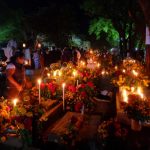 [ENGLISH]
[ENGLISH]
During my time in Mexico, I made the most of my free time to travel around the country and experience its varied culture through exploring different regions. I believe that a language is not learnt in a classroom, but rather through the experiences you have and the people you meet. So, in a country as large and culturally diverse as Mexico, it was important to me to see life outside of the capital city. Mayan ruins, remote waterfalls, ‘magical’ towns, wild beaches, mystical cenotes, cities teeming with spiritual festivities: Mexico has not just one, but multiple, exciting identities, and I wanted to immerse myself in all of them.
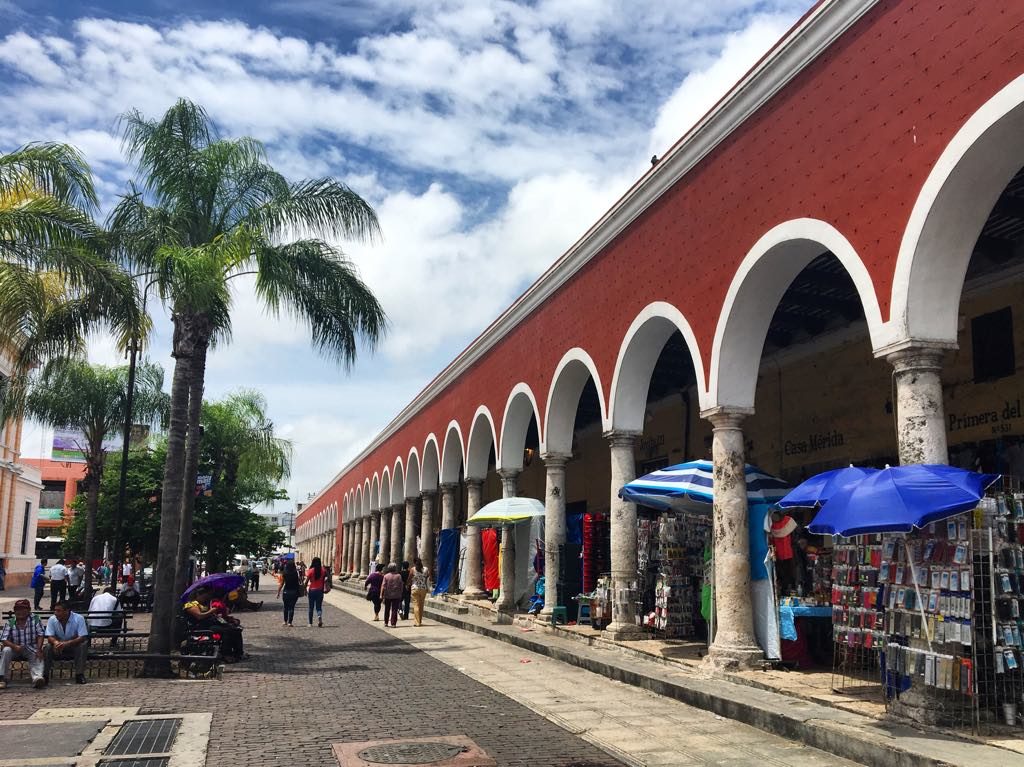
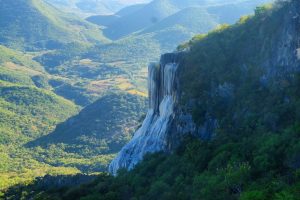
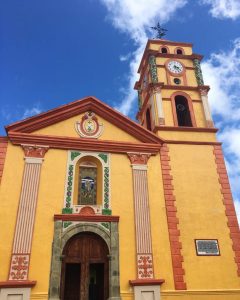
The Yucatán Peninsula (‘The Mayan Riviera’)
At the start of my semester in Mexico, our faculty was closed for 2 weeks due to building works, and so after finding somewhere to live and settling into the city, I used this time to travel to the Yucatán Peninsula. The Yucatán was the centre of ancient Mayan civilisation, and there are many Maya archaeological sites here, such as Chichén Itzá and Tulum. I had taken a Pre-Hispanic History of Art class and so it was very interesting for me to visit both sites prior to learning about them in class. I started in Merida, a colonial town and from there went to Chichén Itzá, one of the largest cities in the Maya world with one of the most diverse populations. The closest town is Valladolid, where I stopped to visit a ‘cenote’ an underground sinkhole filled with water, some resembling caves and others shallow enough to look like a beautiful pond or lake. I also visited a cenote in Tulum, the shallow kind, which looked like a watercolour painting – the colours were so vivid. The Mayan ruins of Tulum sit on the edge of a cliff overlooking the Caribbean Sea, an astounding location where you can really picture Mayan chiefs being the first to see Spanish ships sail over the horizon towards their communities. It was one of the last cities to be inhabited by Maya people, and survived 70 years into the Spanish conquest. It is also one of the best-preserved Maya sites today. The last places I visited in the Yucatán were Cozumel Island and Lake Bacalar. Cozumel is said to be one of the best sites in the world for scuba diving, and it was incredible to see the marine life here. Lake Bacalar is also known as the ‘lake of seven colours’ as its waters are seven different shades of blue. The Mayan Riviera was a beautiful place to visit whilst in Mexico, and it gave me a great basis of Maya history which I could build on when I started my classes.
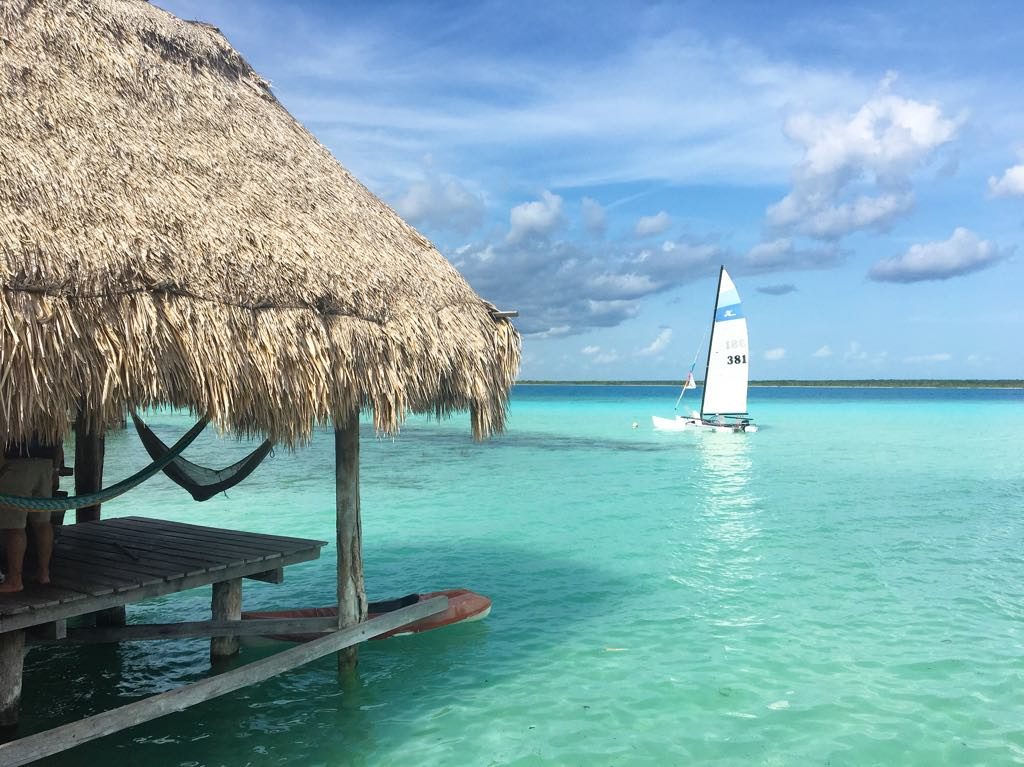
Querétaro and the Sierra Gorda Nature Reserve
In the middle of the semester, I had a few days off in one week which allowed me to visit the city of Queretaro and nearby nature reserve the ‘Sierra Gorda’. This smaller city was a welcome break from the busy capital, and the people were so welcoming and friendly. I found myself easily conversing 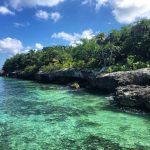 with strangers to ask for advice about the city, or even just listening to stories about their lives there. Taxi drivers, women we sat next to on buses, people in cafés, market stall owners… the list goes on! After a day exploring the colourful streets of Queretaro, we travelled to Jalpan de Serra, the main town (albeit tiny town) in the centre of the Sierra Gorda nature reserve. This is not a place many tourists visit, although it is quite easy to get to, once you are there it is quite remote and slightly difficult to get around the reserve. For this reason, we stayed in the town of Jalpan where there were a few public buses. The homestay we found was a beautiful house with such welcoming hosts, who were more than happy to recommend places to go in the area, and even cooked and ate breakfast with us. It is a ‘pueblo mágico’ (Magic town) which is an initiative run by Mexico’s tourism board to promote a series of towns which offer a ‘magical’ experience through their natural beauty, cultural value, or historical significance. (1) Within around a 1 hour radius from the town, we discovered stunning remote waterfalls, rivers, caves, lakes and mountains and even a tree growing from water springs. The remoteness of this area allowed us to see a side of Mexico yet untouched by tourism, both in its natural beauty and in the kind-heartedness of its people.
with strangers to ask for advice about the city, or even just listening to stories about their lives there. Taxi drivers, women we sat next to on buses, people in cafés, market stall owners… the list goes on! After a day exploring the colourful streets of Queretaro, we travelled to Jalpan de Serra, the main town (albeit tiny town) in the centre of the Sierra Gorda nature reserve. This is not a place many tourists visit, although it is quite easy to get to, once you are there it is quite remote and slightly difficult to get around the reserve. For this reason, we stayed in the town of Jalpan where there were a few public buses. The homestay we found was a beautiful house with such welcoming hosts, who were more than happy to recommend places to go in the area, and even cooked and ate breakfast with us. It is a ‘pueblo mágico’ (Magic town) which is an initiative run by Mexico’s tourism board to promote a series of towns which offer a ‘magical’ experience through their natural beauty, cultural value, or historical significance. (1) Within around a 1 hour radius from the town, we discovered stunning remote waterfalls, rivers, caves, lakes and mountains and even a tree growing from water springs. The remoteness of this area allowed us to see a side of Mexico yet untouched by tourism, both in its natural beauty and in the kind-heartedness of its people.
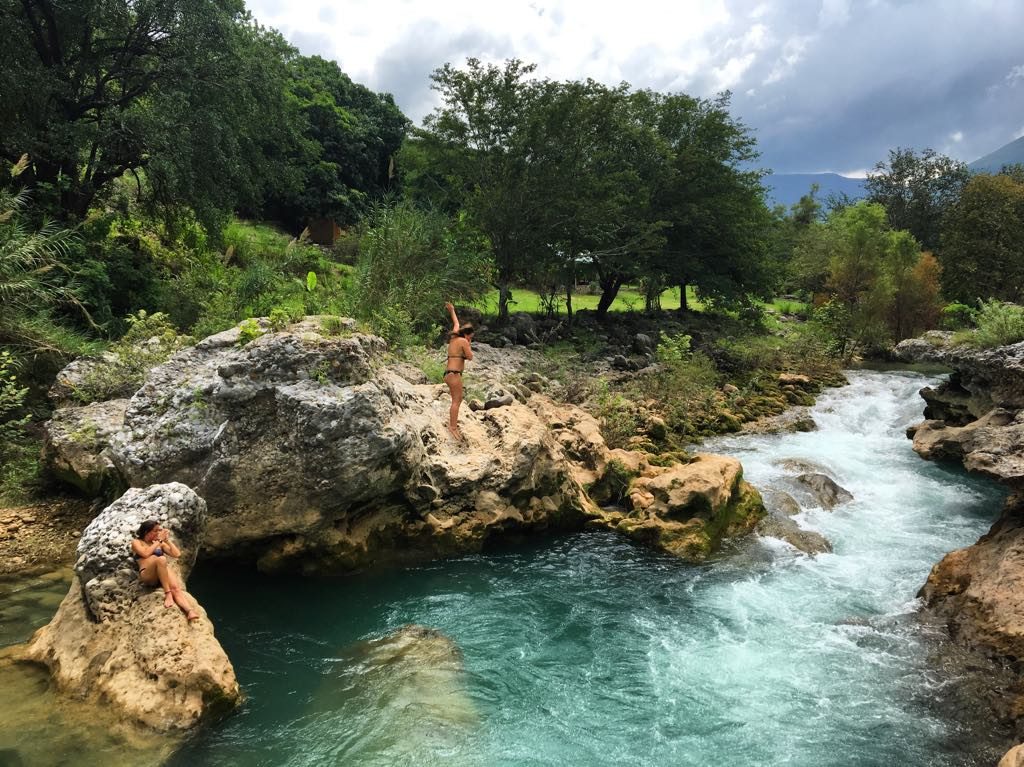
Oaxaca and the Pacific Coast
The final trip I was able to make in Mexico was during the Day of the Dead festival (of which I write more in detail in my previous blog post). We had 2 days off classes during this time, but I was lucky to not have classes on two other days of this week, which meant I had a full week to celebrate and experience Day of the Dead in Oaxaca (pronounced ‘Wa-ha-ca’) and the pacific coast. We left Mexico City on the Tuesday, had to wait 4 hours for a bus (because we hadn’t booked in advance…) and then made it to Oaxaca by Tuesday evening, in time for the start of the celebrations. The city was teeming with people and the spirits of their loved ones, both in the centre of the city and in the beautiful cemeteries we visited. From the city we visited Monte Alban, an archaeological site which was one of the earliest Zapotec cities in Mesoamerica, and Hierve el Agua, petrified waterfalls and naturally formed infinity pools. We had a few extra days so we visited the town of Mazunte on the Pacific coast to enjoy the fresh seafood (ceviche!), and see the wild pods of dolphins and mating season of sea turtles.
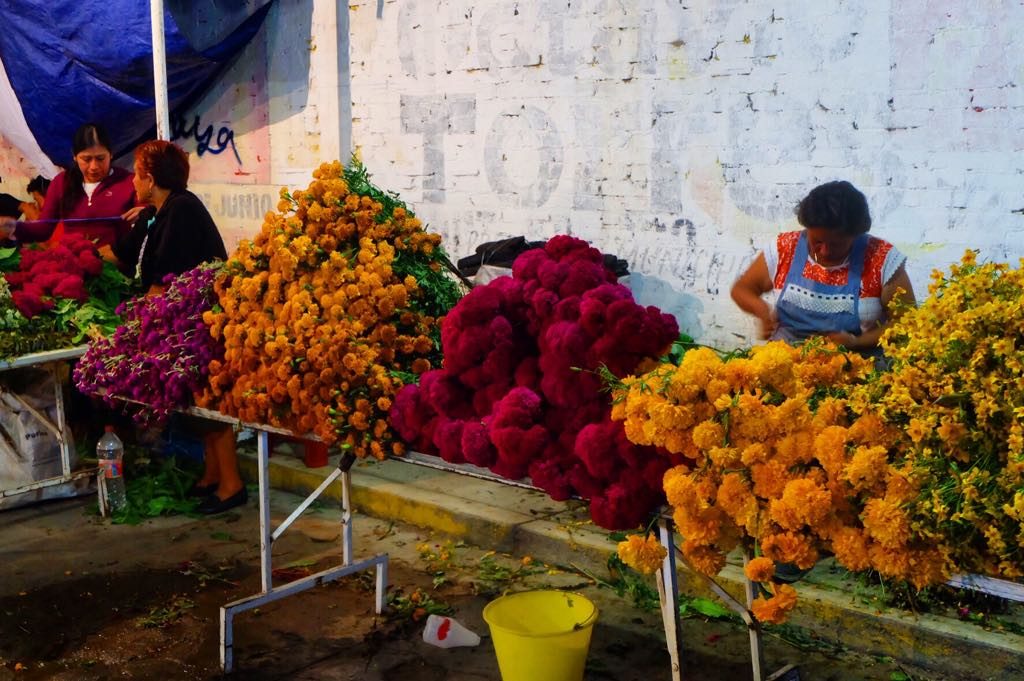 I spoke Spanish all the time throughout these trips and I think it’s important to stress that there were many different learning situations that were very different to every day life in the city. I feel like I was able to see enough of Mexico to say that I truly visited the country rather than just the capital city, and although there are many other places to visit, I think my knowledge and understanding of the country is all the better for it.
I spoke Spanish all the time throughout these trips and I think it’s important to stress that there were many different learning situations that were very different to every day life in the city. I feel like I was able to see enough of Mexico to say that I truly visited the country rather than just the capital city, and although there are many other places to visit, I think my knowledge and understanding of the country is all the better for it.
- Information adapted from Wikipedia.com
